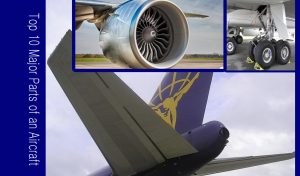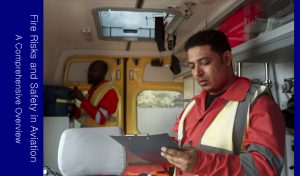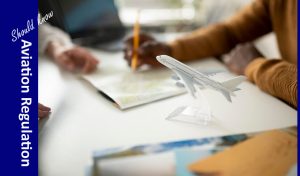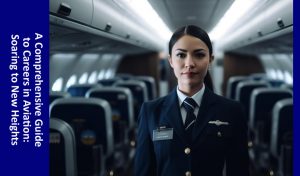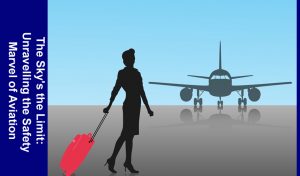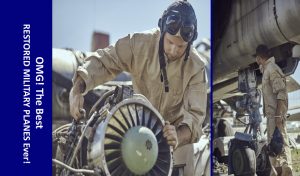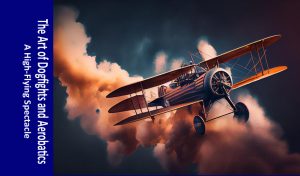Aerobatics competitions are some of the most exciting and challenging sporting events in the world. Pilots compete against each other to perform a series of prescribed maneuvers, or sequences, in a tightly defined airspace. The maneuvers are judged on their accuracy, smoothness, and difficulty. Here we are Uncovering the Secrets of Aerobatics Competitions and its type along with some additional information.
Aerobatics competitions are divided into three main categories: individual aerobatics, formation aerobatics, and freestyle aerobatics.
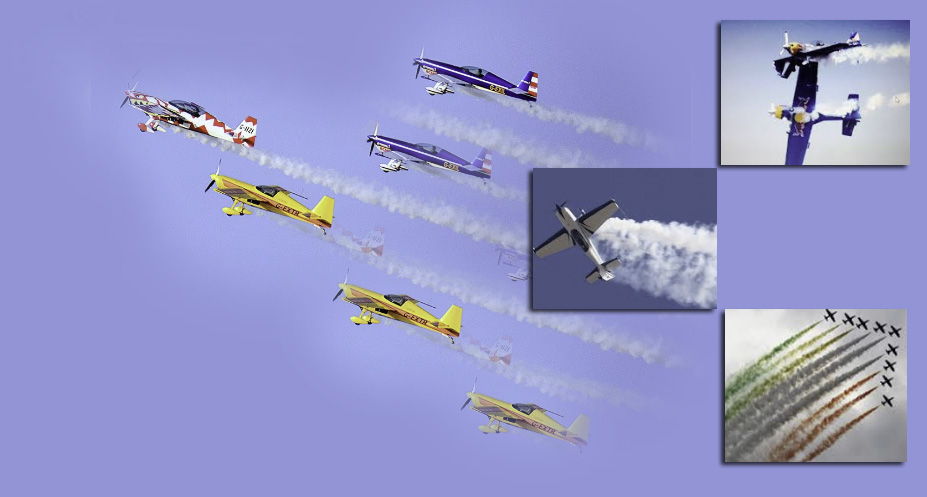
Individual Aerobatics
Individual aerobatics is the most common type of aerobatics competition. In this category, pilots compete against each other to perform a series of prescribed maneuvers in a fixed order. The maneuvers are judged on their accuracy, smoothness, and difficulty.
Some of the most common individual aerobatics maneuvers include:
- Loops: A loop is a complete 360-degree turn in the vertical plane.
- Rolls: A roll is a complete 360-degree turn around the longitudinal axis of the aircraft.
- Spins: A spin is a controlled descent in which the aircraft rotates around its vertical axis.
- Immelmann turn: An Immelmann turn is a maneuver that combines a half loop with a half roll.
- Split S: A Split S is a maneuver that combines a half roll with a half inverted loop.
Other individual aerobatics maneuvers include:
- Hammerhead: A hammerhead is a stall turn that results in a vertical climb.
- Lomcevak: A Lomcevak is a maneuver that involves a rapid pitch-up followed by a roll.
- Cuban 8: A Cuban 8 is a maneuver that resembles a figure eight in the vertical plane.
- Tumble: A tumble is a maneuver that involves a series of rapid rolls and pitch changes.
- Snap roll: A snap roll is an uncontrolled roll that results in a loss of altitude.
Individual aerobatics competitions are typically held in a box-shaped airspace that is approximately 1,000 meters (3,300 feet) on a side. The pilots perform their maneuvers within this airspace, and their performances are judged by a panel of judges.
The judges evaluate the pilots’ performances based on a number of factors, including:
- Accuracy: How well does the pilot perform the prescribed maneuvers?
- Smoothness: Does the pilot perform the maneuvers smoothly and without hesitation?
- Difficulty: How difficult are the maneuvers that the pilot performs?
- Artistry: Does the pilot perform the maneuvers in an artistic and creative way?
The pilot with the highest score is declared the winner of the competition.
Individual aerobatics competitions are a challenging and rewarding sport. They require a high level of skill, precision, and athleticism. Aerobatic pilots train for years to perfect their skills and compete at the highest level.
If you have the opportunity to attend an individual aerobatics competition, I highly recommend it. It is an amazing sight to see these skilled pilots perform their amazing maneuvers.
Formation Aerobatics
Formation aerobatics is a type of aerobatics competition in which teams of two or more pilots fly together in close formation while performing aerobatic maneuvers. Formation aerobatics requires a high level of teamwork and coordination.
Some of the most common formation aerobatic maneuvers include:
- Mirror flight: Mirror flight is a maneuver in which two aircraft fly in close formation, facing each other.
- Tail chase: Tail chase is a maneuver in which one aircraft chases another aircraft around the sky.
- Formation loops and rolls: Formation loops and rolls are maneuvers in which two or more aircraft perform loops and rolls together in close formation.
- Formation passes: Formation passes are maneuvers in which two or more aircraft fly past each other in close formation.
- Diamond: The diamond formation is a maneuver in which four aircraft fly in a diamond shape.
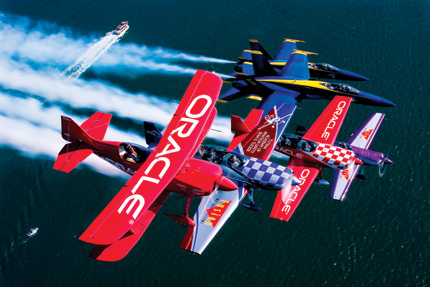
Other formation aerobatic maneuvers include:
- Arrow: The arrow formation is a maneuver in which three aircraft fly in an arrow shape.
- Delta: The delta formation is a maneuver in which four aircraft fly in a triangle shape.
- Lead and tail: The lead and tail formation is a maneuver in which two aircraft fly in close formation, with one aircraft in front of the other.
- Box: The box formation is a maneuver in which four aircraft fly in a box shape.
- Over-under: The over-under formation is a maneuver in which two aircraft fly in close formation, with one aircraft above the other.
Formation aerobatics competitions are typically held in a box-shaped airspace that is approximately 1,000 meters (3,300 feet) on a side. The teams perform their maneuvers within this airspace, and their performances are judged by a panel of judges.
The judges evaluate the teams’ performances based on a number of factors, including:
- Accuracy: How well does the team perform the prescribed maneuvers?
- Smoothness: Does the team perform the maneuvers smoothly and without hesitation?
- Difficulty: How difficult are the maneuvers that the team performs?
- Artistry: Does the team perform the maneuvers in an artistic and creative way?
- Teamwork: How well does the team work together?
The team with the highest score is declared the winner of the competition.
Formation aerobatics competitions are a challenging and rewarding sport. They require a high level of skill, precision, and teamwork. Aerobatic pilots train for years to perfect their skills and compete at the highest level.
If you have the opportunity to attend a formation aerobatics competition, I highly recommend it. It is an amazing sight to see these skilled pilots perform their amazing maneuvers in close formation.
Freestyle Aerobatics
Freestyle aerobatics is the most creative type of aerobatics competition. In this category, pilots design and perform their own routines. Freestyle routines typically include a variety of aerobatic maneuvers, as well as music and special effects.
Freestyle aerobatics pilots are judged on the creativity, difficulty, and execution of their routines. The top freestyle aerobatic pilots in the world are some of the most creative and skilled pilots in the world.

The Olympics of the Air
Aerobatics competitions are often referred to as the “Olympics of the air” because they require a high level of skill, precision, and athleticism. Aerobatic pilots compete against each other to perform a series of prescribed maneuvers, or sequences, in a tightly defined airspace. The maneuvers are judged on their accuracy, smoothness, and difficulty.
Aerobatics competitions are divided into three main categories: individual aerobatics, formation aerobatics, and freestyle aerobatics.
Individual aerobatics is the most common type of aerobatics competition. In this category, pilots compete against each other to perform a series of prescribed maneuvers in a fixed order. The maneuvers are judged on their accuracy, smoothness, and difficulty.
Formation aerobatics is another popular type of aerobatics competition. In this category, teams of two or more pilots fly together in close formation while performing aerobatic maneuvers. Formation aerobatics requires a high level of teamwork and coordination.
Freestyle aerobatics is the most creative type of aerobatics competition. In this category, pilots design and perform their own routines. Freestyle routines typically include a variety of aerobatic maneuvers, as well as music and special effects.
Freestyle aerobatics pilots are judged on the creativity, difficulty, and execution of their routines. The top freestyle aerobatic pilots in the world are some of the most creative and skilled pilots in the world.
Aerobatics competitions are held all over the world, and the level of competition is very high. The top aerobatic pilots in the world are some of the most skilled pilots in the world.
Some of the most prestigious aerobatics competitions in the world include:
- World Aerobatic Championships
- European Aerobatic Championships
- US National Aerobatic Championships
- FAI World Aerobatic Cup
- Red Bull Air Race
Why Should Aerobatics Competitions Be Part of the Olympic Games?
I believe that aerobatics competitions have the potential to become a mainstream air sport. With the right promotion and support, aerobatics competitions could be as popular as other major sports such as Formula One racing or NASCAR.
Here are some of the reasons why I believe that aerobatics competitions should be part of the Olympic Games:
- Aerobatics is a challenging and exciting sport that deserves to be recognized at the highest level. Aerobatic pilots train for years to perfect their skills and compete at the highest level. They are some of the most skilled pilots in the world.
- Aerobatics is a spectator-friendly sport. Aerobatics competitions are visually stunning and exciting to watch. Fans can see pilots performing amazing maneuvers in the sky, all while flying at high speeds.
- Aerobatics is a global sport. Aerobatics competitions are held all over the world, and pilots from all over the world compete. This would make aerobatics a great addition to the Olympic Games, as it would showcase the talent and skill of pilots from all over the globe.
- Aerobatics would promote aviation and inspire the next generation of pilots. Aerobatics competitions are a great way to get people excited about aviation. Seeing pilots perform amazing maneuvers in the sky can inspire young people to pursue a career in aviation.
I hope that one day aerobatics competitions will become part of the Olympic Games. It is a challenging and exciting sport that deserves to be recognized at the highest level.
Secrets of Aerobatics Competitions and the Future
Aerobatics competitions are a growing sport, and the level of competition is constantly increasing. Aerobatic pilots are constantly pushing the limits of what is possible in the air.
In the future, we can expect to see even more amazing and innovative aerobatics routines. Aerobatics competitions are a great way to see some of the most amazing flying in the world. If you have the opportunity to attend an aerobatics competition, I highly recommend it. You will not be disappointed.
Here are some of the trends that we can expect to see in the future of aerobatics competitions:
- More advanced aircraft: Aerobatic pilots are always looking for ways to improve their performance. In the future, we can expect to see more pilots using advanced aircraft that are specifically designed for aerobatic competition.
- More innovative routines: Aerobatic pilots are constantly coming up with new and innovative routines. In the future, we can expect to see even more amazing and visually stunning aerobatics routines.
- More global competition: Aerobatics competitions are becoming increasingly popular all over the world. In the future, we can expect to see more pilots from all over the world competing at the highest level.
- More spectator-friendly events: Aerobatics competitions are already very spectator-friendly, but there is always room for improvement. In the future, we can expect to see aerobatics competitions that are even more exciting and engaging for spectators.
Overall, the future of aerobatics competitions is very bright. The sport is growing, the level of competition is increasing, and the pilots are constantly innovating. If you are a fan of aviation or simply enjoy watching amazing feats of skill, then I encourage you to check out an aerobatics competition. You will not be disappointed.
Conclusion
Aerobatics competitions are an exciting and challenging sport that showcases the skill and athleticism of some of the best pilots in the world. They are also a great way to promote aviation and inspire the next generation of pilots.
I believe that aerobatics competitions have the potential to become a mainstream sport. With the right promotion and support, aerobatics competitions could be as popular as other major sports such as Formula One racing or NASCAR.
I would like to see aerobatics competitions become part of the Olympic Games. Aerobatics is a challenging and exciting sport that deserves to be recognized at the highest level.
I hope that this closer look at aerobatics competitions and the Olympics of the air has given you a better understanding of this amazing sport.
